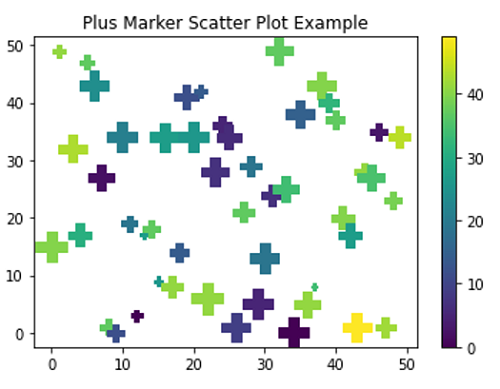

For the hatch pattern to show up at all I must set the edgecolor, however when I do, I get a very thick border around the marker. The scatter() function plots one dot for each observation. In this example of a marker from my scatter plot I have set the color to green, and edge color to black, and hatch to ''. Plt.scatter(x,y, s=500, marker='s', edgecolor='black', linewidth=3, facecolor='green', hatch='|') With Pyplot, you can use the scatter() function to draw a scatter plot.
PYPLOT SCATTER MARKER STYLE CODE
See the code example below to produce scatter plots such as these:

However, I don't think the thickness of individual lines within hatching is controllable. In this post, we’ll go through all the available markers and ways to use them.

As graphs contain different types of markers and other indicating icons, you can customize them by using marker functions. Matplotlib Marker is a special way of handling markers in Matplotlib graphs. You can increase the density of hatching, by repeating symbols (in the example below, the '|' is repeated in the R/H pane note that to obtain NW->SE diagonal lines the symbol must be escaped so needs twice as many characters to really double it - '\\\\' is density 2 while '||||' is density 4). Both the plot and scatter use the marker functionality.To control the marker border thickness, you just need to set the linewidth for scatter() (or markeredgewidth for plot()). at 15:19 4 tcaswell, you mean s20 means the marker size equals that of a fontsize20 letter LWZ at 19:19 59 () has ms parameter ( markersize) an equivalent for () parameter s ( size ).


 0 kommentar(er)
0 kommentar(er)
